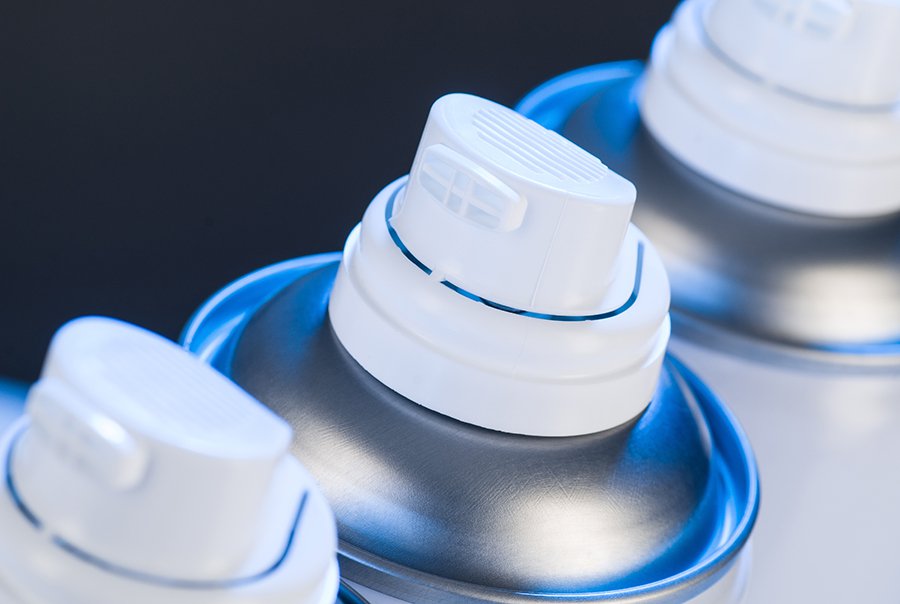
Inhalants: How drugs affect you (bundle of 50)
Pamphlets
$36.32 (inc. GST)
View in ADF Shop
How are inhalants used?
Inhalants are breathed in through the nose or mouth.
They may be sprayed into a plastic bag, poured into a bottle or soaked onto a cloth or sleeve before being inhaled.
Sometimes they are inhaled directly from the container or are sprayed directly into the mouth or nose. This method is very dangerous because it can cause suffocation.3
Effects of inhalants
Use of any drug can have risks. It’s important to be careful when taking any type of drug.
Inhalants affect everyone differently, based on:
- Size, weight and health
- Whether the person is used to taking it
- Whether other drugs are taken around the same time
- The amount used
- The type of inhalant used
- Amount of fresh air breathed while sniffing
- Amount of physical activity before and after sniffing
Effects include:
- feelings of excitement and euphoria
- feeling relaxed
- increased risk-taking
- loss of coordination
- dizzy/light-headed
- visual distortions
- confusion
- irritation to eyes/nose/throat
- nausea
- headaches.4
Overdose
If you inhale a substance too many times or use a particularly strong inhalant, you could overdose. This is also referred to as ‘acute intoxication’. Call an ambulance straight away by dialling triple zero (000) if you, or someone else, has any of the following symptoms (Emergency services are there to help and can provide instructions over the phone):
- nausea, vomiting and diarrhoea
- irregular heartbeat
- chest pain
- delirium
- hallucinations
- blackout, seizures and coma.1,5
A person recovering from acute intoxication should be kept in a safe place and monitored by medical professionals until they have fully recovered. Recovery can take around 2-4 hours or longer if they regularly use inhalants.6
Sudden death
Inhaling certain substances has been known to cause sudden death. Death from inhalant use can occur as a result of:
- Sudden sniffing death – when someone experiences cardiac arrest or heart failure after using inhalants. The chemicals in inhalants can cause a spike in adrenaline which the heart is sensitive to, resulting in cardiac arrest. This is particularly risky if the person is stressed or does heavy exercise after inhaling.4,7
- Suffocation – this is when the gas inhaled takes the place of oxygen in the lungs, either from using in enclosed spaces (without fresh air), or from dangerous practices such as placing a plastic bag being placed over the head. Spraying some substances directly into the mouth can freeze the throat and airways, causing the person to suffocate.8
Low aromatic fuels
Unleaded petrol has been replaced by low aromatic fuels such as BP’s Opal fuel in some rural and remote communities in Australia. Sniffing low aromatic fuels does not produce a high but can still cause damage to a person’s health including death.9
See Low aromatic fuel.
Coming down
In the days after inhalant use, you may experience:
- headaches
- nausea
- dizziness
- drowsiness
- mental numbness.1
Long-term effects
Regular use of inhalants may eventually cause:
- irritability and depression
- memory loss
- reduced attention span and ability to think clearly
- pimples around the mouth and lips
- pale appearance
- tremors
- weight loss
- reduced growth potential (height)
- tiredness
- excessive thirst
- loss of sense of smell and hearing
- problems with blood production, which may result in anaemia, irregular heartbeat, heart muscle damage
- chest pain and angina
- indigestion and stomach ulcers
- liver and kidney damage
- needing to use more to get the same effect
- dependence on inhalants
- financial, work and social problems1,5,10
Most of these long-term effects can be reversed if use is stopped. However, some inhalants can cause permanent damage.5
Inhalants and mental health
Regular inhalant use is associated with higher rates of depression, anxiety disorders and issues with other drugs and/or alcohol.4 This doesn’t necessarily mean that inhalants cause these issues, but the use of inhalants can bring them on or make them worse. People who use inhalants are also more likely to experience stressful events such as having problems at school, home or work.4
Tolerance and dependence
People who regularly use inhalants can quickly become dependent on the drug. People who are dependent on inhalants might find that using them becomes far more important than other things in their lives, such as work, sport, socialising or study.4 They may also develop a tolerance to it, which means they need to take larger amounts of inhalants to get the same effect.4
Mixing inhalants with other drugs
Mixing inhalants with other drugs can have unpredictable effects and increase the risk of harm.
- Inhalants and alcohol/benzodiazepines/opioids: Can affect breathing rate and may increase the risk of losing consciousness or suffocating. 4,7
Reducing harm
There are ways you can reduce the risk of harm when using inhalants:
- avoid sniffing in an enclosed space or indoors
- avoid running or doing other physical activity after sniffing (could cause death due to cardiac sensitisation or lead to injuries/accidents)
- avoid sniffing near roads or traffic, high places such as rooftops, or near water, beaches, lakes
- avoid mixing inhalants with other drugs, including prescribed medication and illicit substances
- avoid sniffing alone
- do not spray directly into mouth or put plastic bag over head. This can cause suffocation.4,7,11
Withdrawal
Giving up inhalants after using them for a long time is challenging because the body has to get used to functioning without them. Withdrawal symptoms usually start 24-48 hours after the last use, and may last for 2 to 5 days.5 These symptoms can include:
- Hangover
- Headache, nausea and stomach pain
- Tiredness, shakiness, tremors
- Cramps
- Hallucinations and visual disorders, such as seeing spots.5
Getting help
If your use of inhalants is affecting your health, family, relationships, work, school, financial or other life situations, or you’re concerned about someone else, you can find help and support.
Call the National Alcohol and Other Drug Hotline on 1800 250 015 for free and confidential advice, information and counselling about alcohol and other drugs
Help and Support Services search
Find a service in your local area from our list. Simply add your location or postcode and filter by service type to quickly discover help near you.
If you're looking for other information or support options, send us an email at druginfo@adf.org.au
Path2Help
Not sure what you are looking for?
Try our intuitive Path2Help tool and be matched with support information and services tailored to you.

Other help, support services and resources
Links to further help and support
Information on inhalants and young people
More information
Family Drug Help – 1300 660 068 – www.familydrughelp.com.au
Family Drug Support – 1300 368 186 – www.fds.org.au
Parent and Family Drug Support Line - 1800 653 203 - www.mhc.wa.gov.au/parentandfamilydrugsupportline
Inhalant use is not a criminal offence in any Australian state or territory.
In recent years, some Australian States and Territories have revised police powers to intervene in inhalant use in two main ways. Police are authorised to:
- Take away inhalants and related equipment
- Pick up young people who are using inhalants and release them into the care of a responsible person, or a place of safety.9
It is also illegal in these states/territories to sell or supply products to someone if it is known they will be used for the purpose of inhaling:
Queensland
Section 23 of the Summary Offences Act 2005
Section 603 – 607 of the Police Powers and Responsibilities Act 2000
Part 2 Section 10 of the Drugs Misuse Act 1986
Western Australia
Section 206 (1) of the Criminal Code Act 1913.
Sections 5-14 of the Protective Custody Act 2000
Section 7 (1) (g) of the Aboriginal Communities Act 1979
Victoria
Sections 57-60T of the Drugs, Poisons and Controlled Substances Act 1981
Drugs, Poisons and Controlled Substances (Volatile Substances) Regulations 2004
South Australia
Section 19 of the Controlled Substances Act 1984.
Section 42D of the Anangu Pitjantjatjara Yankunytjatjara Land Rights Act 1981.
Section 7 of the Public Intoxication Act 1984
New South Wales
There is no specific legislation in NSW that refers directly to inhalant use only legislation referring to intoxicated persons.
Part 14 and 16 of the Law Enforcement (Powers and Responsibilities) Act 2002
Section 9 of the Summary Offences Act 1988
Northern Territory
Part 2, Part 4 and Part 5 Sections 52 of the Volatile Substance Abuse Prevention Act 2005
Australian Capital Territory
There is no specific legislation in the ACT that refers directly to inhalant use, only legislation referring to intoxicated persons.
National
- 4.8% of Australians aged 14 years and over have used inhalants one or more times in their life12
- 1.4% of Australians aged 14 years and over have used inhalants in the previous 12 months12
- Between January 2010 and December 2020, there were 58 unintentional deaths recorded in Australia as a result of inhalant use.13
Young people
- Young Australians (aged 14–29) first try inhalants at 18.7 years on average12
- 18% of all students have deliberately sniffed inhalants at least once.14
- Brands B, Sproule B, Marshman J. Drugs and Drug Abuse. Toronto: Addiction Research Foundation; 1998 [22.02.2023].
- National Institute on Drug Abuse (NIDA). What are inhalants? 2011 [27.04.2023].
- Drug and Alcohol Office. Inhalant Use: A Guide for Parents and Families: Government of Western Australia; 2014 [02.05.2023].
- Black E, Maclean S, Duncan J et al. Inhalants: what you need to know. UNSW Sydney: National Drug and Alcohol Research Centre; 2014 [02.05.2023].
- Campbell A. The Australian Illicit Drug Guide: Every Person's Guide to Illicit Drugs--Their Use, Effects and History, Treatment Options and Legal Penalties: Black Inc; 2001 [07.02.2023].
- Government of Western Australia Mental Health Commission. About VSU - Acute intoxication 2015 [21.04.2023].
- National Health and Medical Research Council. Caring for people who sniff petrol or other volatile substances: a Quick Reference Guide for Health Workers. Melbourne: National Health and Medical Research Council; 2011 [02.05.2023].
- Government of Western Australia Mental Health Commission. About VSU - Harms [21.04.2023].
- Department of the Prime Minister and Cabinet. Review into the Operation of the Low Aromatic Fuel Act 2013. Canberra: Australian Government 2019 [03.05.2023].
- Crossin R, Lawrence AJ, Andrews ZB, Churilov L, Duncan JR. Growth changes after inhalant abuse and toluene exposure: A systematic review and meta-analysis of human and animal studies. Human & Experimental Toxicology [Internet]. 2018 2019/02/01; 38(2):[157-72 pp.].
- Government of Western Australia Mental Health Commission. Reducing VSU harm [10.11.2023].
- Australian Institute of Health and Welfare. National Drug Strategy Household Survey 2019 Canberra: AIHW; 2020 [11.04.2023].
- Berling I, Chiew A, Brown J. Poisonings from hydrocarbon inhalant misuse in Australia. Addiction [Internet]. 2023 [21.04.2023].
- Guerin N, White V. ASSAD 2017 Statistics & Trends: Australian Secondary Students’ Use of Tobacco, Alcohol, Over-the-counter Drugs, and Illicit Substances Centre for Behavioural Research in Cancer: Cancer Council Victoria; 2018 [03.05.2023]. 92]. Available from:
